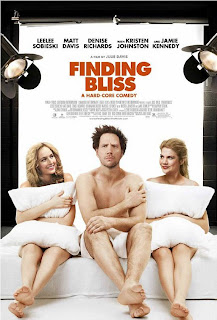"Nightmare Alley" a starry, sumptuously moody noir with enough to like
Nightmare Alley (2021)
For those new to the material, “Nightmare Alley” almost doesn’t feel like a picture by Guillermo del Toro (who deservedly won three Oscars, including Best Picture, for 2017's "The Shape of Water"). But whether we want to call it the second film adaptation of William Lindsay Gresham’s 1946 novel or a remake of the 1947 noir, it is wholly a monster movie—del Toro’s specialty—where man can be the real beast and have the blackest of hearts. While it’s not as tightly paced as the first film, del Toro’s “Nightmare Alley” offers plenty of pulpy, rapturous enjoyment (and more character detail) out of genre trappings and in watching a murderers’ row of A-list talent slink around sumptuously moody production design and art direction.
The story is very much the same, although del Toro and co-writer Kim Morgan begin with a different, much earlier introduction to Stanton “Stan” Carlisle (Bradley Cooper), who’s even more of an enigma. He buries a body under the floorboards of a rickety house before lighting everything up in flames. Stan hops on a bus, until he reaches a traveling carnival (owned by Willem Dafoe) and looks for work. The drifter, though a man of few words, ingratiates himself into this carnie world of fortune-tellers (Toni Collette’s Zeena and her mentalist husband Pete, played by David Strathairn), a strong man (Ron Pearlman), and a chicken head-eating geek. Stan earns his keep, and as he outgrows this family, his ambitions lead him to run away with quiet but kind "electric girl" Molly (Rooney Mara). Two years later in Buffalo, New York, the married couple is the toast of the town as mentalists who dupe rich audiences. It’s all swell until Stan pulls the “spook show,” pretending to communicate with the dead, and gets his bluff called by psychiatrist Dr. Lilith Ritter (Cate Blanchett). This dame wasn’t born yesterday, and she could get in on the con, too, since she records every session with her patients.
A traveling carnival. A smoky Art Deco-style psychiatrist’s office. A tycoon’s snow-swept garden. With these three disparate locations, Guillermo del Toro is no charlatan when it comes to masterfully creating a distinct atmosphere that you can truly feel. He and cinematographer Dan Laustsen make sure this world looks slick but richly textured, as if it’s all a façade. Admittedly, the first hour of “Nightmare Alley,” while admirably taking its time for character introductions, does feel sluggish and even rudderless. It’s even a while before Guillermo del Toro’s singularity takes hold of the material. But once Stan and Molly get to Buffalo, things pick up considerably.
As the demon-laden Stanton, Bradley Cooper does have the trickiest task of first making the fraud mentalist nearly mute with a secret to hide, then making him a charmer that gets more charming and sleazy as he learns the tricks of the trade. As Stan’s arc comes full-circle—and we reason why he prides himself for not drinking booze—his comeuppance feels more fatalistic than devastating. Perhaps it’s by design that we’re not even meant to feel much for Stan, a monstrous man scheming toward his own inevitable destruction, but that detachment doesn’t make for the most powerful outcome, as steeped in grim irony as it is.
No matter how small the part, each actor in this large ensemble is able to find color and pathos. Most memorable are Toni Collette, bringing a seen-it-all weariness and brazen sexuality to fortune teller Zeena; David Strathairn, who makes a heartbreaking imprint without a lot of time as Zeena’s alcoholic husband Pete; and Richard Jenkins, full of volatile gusto as wealthy Ezra Grindle. Only Mary Steenburgen doesn’t really get her due in two brief scenes as Miss Kimball, one of Stan’s cons, but she does at least receive the film’s most effective jolt of sudden violence. The one performer getting the juiciest of scenery to chew is Cate Blanchett, riveting as the ever-smoking, ever-glistening Dr. Lilith Ritter, who might be the most seductive femme fatale who ever femme fataled. Whenever she’s participating in a scene with Cooper, the film is at its most urgent and electric.
As some may snide that this is a superfluous or soulless redux when the original is right there, “Nightmare Alley” has enough going for itself in order for that to not be the case. It’s not the wildly imaginative filmmaker’s most emotionally felt effort, but the level of care, craftsmanship, and passion seen on screen is wholly Guillermo del Toro, and he casts to perfection. The final scene—or shot, rather—is more subdued than that of the original film's downfall of Stan Carlisle, but it’s chillingly cynical nonetheless with Nathan Johnson's haunting piano score. Starry, classy, and aesthetically ravishing, “Nightmare Alley” never deceives as entertainment for grown-ups with a stomach for perfectly bleak endings.
Grade: B
Searchlight Pictures is releasing “Nightmare Alley” (150 min.) in theaters on December 17, 2021.












Comments
Post a Comment